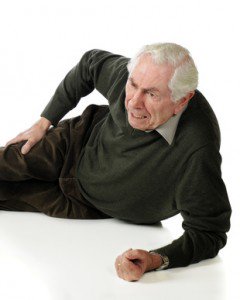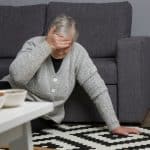We all know that aging successfully depends a great deal on good and healthy lifetime habits. Your genes are also an important factor for aging successfully but more importantly is a favorable environment for your physical and emotional abilities and needs. This means that where you live – your own home – plays a major role in your ability to continue to live independently.
The goal is for your house to provide you a safe place to age and not contribute to the possibility of an accident or a fall. Falling is a very real threat to your independent living. Even older people who appear to be healthy and strong can fall on a rug that slides or trip on a stair that needs fixing. Indeed, falls are the top cause of accidents and the primary cause for serious injuries and accidental deaths in people over 65.
The problem for many is that you are living in the same house where you raised your children. You may have learned to adjust to your age and take precautions but your house hasn’t kept up with you. It remains designed for people who can easily climb out of a 2 foot bathtub or get down to the basement in the dark because the stairs are poorly lit.
America’s over sixty population will double in the next 15 years and an estimated 83 percent of them want to remain living where they celebrated their sixty-fifth birthday according to the national Institute on Aging.
The good news is that most falls are preventable. The even better news is that you can live for many more years in your own home and avoid falls by doing something as simple as rearranging the furniture and adhering to tips on bathtub safety for seniors. In most cases you’ll need to redesign or retrofit the active areas in your home.
Retrofitting and constructing can get messy and there are costs, but nursing homes are far more costly and something you want to avoid. Thankfully, the mess is only temporary.
Before you start to change the physical qualities of your house, consider what your needs and wants are for today and what they may be 10 years from now. You want to consider how the changes will look, whether they make an ecological impact, and which ones are a priority so that you can fit those in your budget. You want to consider how best to maximize your abilities and then discuss the changes with someone who has expertise with this type of renovation. In the end, however, it’s up to you to determine what you need in your home and which tools and amenities will keep you safe.
Your next step is to look at your home and consider each of these areas for your safety:
Sidewalks
Driveway
Garage
Doors and entrances
Door handles
Ramps and railings
Stairways and steps
Porches
Kitchen (can cabinets be reached? From a wheelchair?)
Doorways
Insulation
Cabinet hardware
Bathroom safety
In the meantime, this is what you can do personally to prevent falls:
Wear shoes with non skid soles (not house slippers).
Don’t climb on stools and stepladders; get help on those jobs.
Obtain a home alert system so that you can get the medical help you need regardless of how simple or complex an emergency may be.
Have your eyes checked regularly for any changes.
Get your hearing checked every two years.
Check with your doctor or podiatrist to eliminate corns and calluses.
Get regular exercise – walking (aerobic) and for strengthening your muscles.
Limit your alcohol to one or two drinks a day.
Consider a medical alert device with fall detection in your home when falls may be unavoidable. You can check out the Life Alert costs of a system plus automatic fall detection here on our site.



